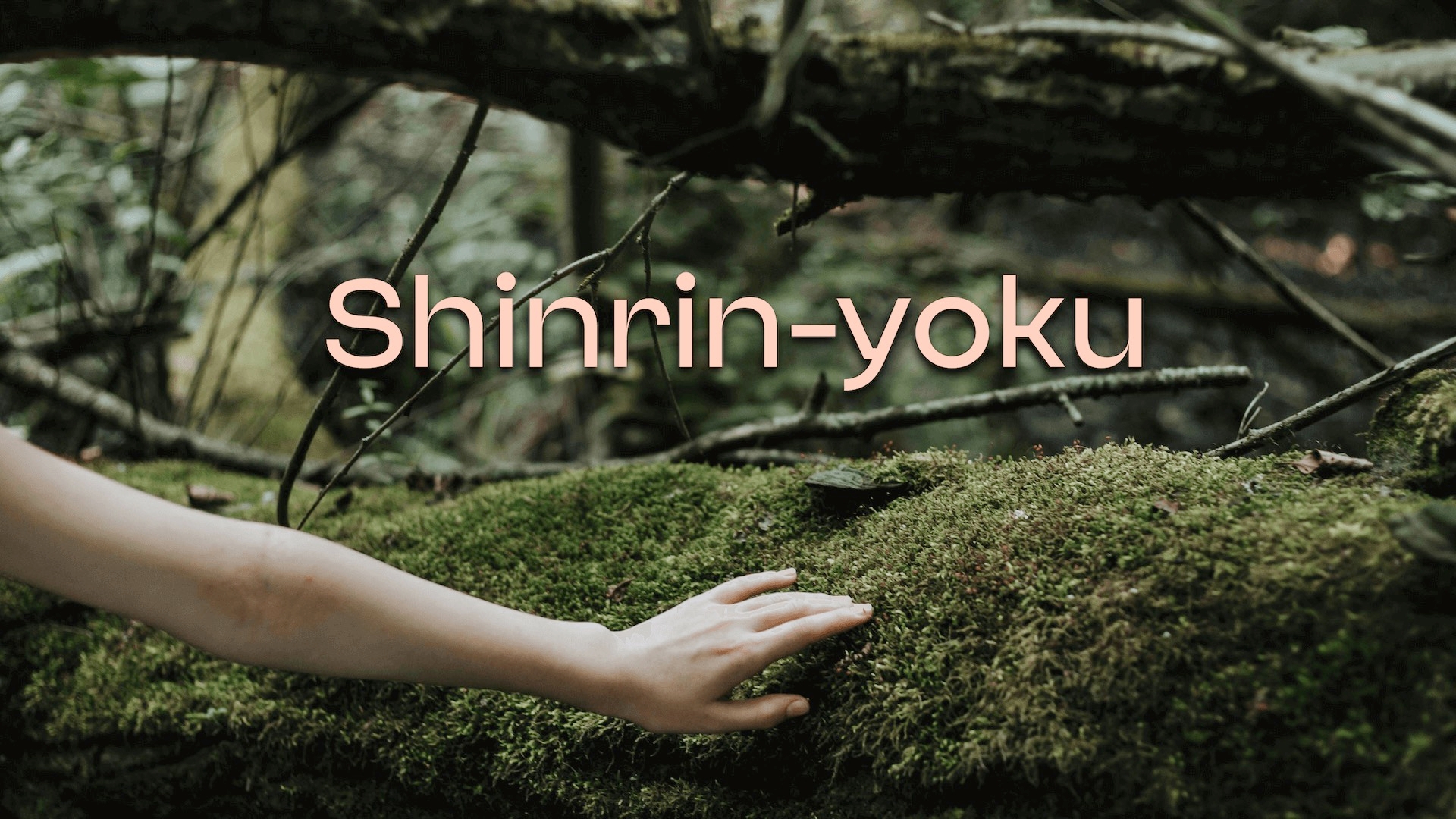What is shinrin-yoku?
Don’t worry, we’re not asking you to literally bathe among the trees. Translated literally, shinrin-yoku means “immersing yourself in the forest atmosphere.” This concept, developed and recognized by the Japanese government in the 1980s as a form of therapy, was a response to the rising stress levels and health issues caused by urban living. The practice of “forest immersion” involves engaging with nature through regular, relaxing walks.
At the heart of shinrin-yoku is mindful and intentional presence in the forest. To reap the health benefits of nature, one must fully engage their senses with everything the forest has to offer — its colors, sounds, scents, and textures. Along with calming sensory stimuli, this practice exposes the body to forest microbiota and valuable particles in the atmosphere, such as essential oils released by trees.

Health benefits
As humans, we have a natural tendency to turn to nature in times of stress or feelings of overwhelm. This phenomenon is even termed “urgent biophilia.” It’s no surprise that forest bathing enjoys worldwide popularity and is considered by many to be a key to achieving inner peace and maintaining good health.
The concept also attracts the attention of researchers, who continually highlight the physical and mental health benefits of shinrin-yoku. Practiced regularly, forest bathing helps alleviate tension by reducing stress hormones such as adrenaline and cortisol. It also normalizes blood pressure, lowering the risk of cardiovascular and nervous system disorders. Forest bathing significantly boosts immune system function and may even benefit metabolic health. A 1998 study published in the International Journal of Biometeorology demonstrated that forest bathing lowers blood glucose levels in individuals with non-insulin-dependent diabetes, independent of exercise intensity or calorie expenditure. Additionally, shinrin-yokuraises levels of dehydroepiandrosterone, a factor combating obesity and diabetes, more effectively than walks of the same duration in urban settings.
The most noticeable effects of forest bathing are on mood and well-being — it increases feelings of calm and vitality while reducing depression and fatigue. Studies confirm its therapeutic value, especially in addressing depression, anxiety disorders, and post-traumatic stress disorder. There is also growing interest in using this practice to aid in treating various addictions.
How to practice forest bathing?
Remember, a forest bath isn’t just a walk. While you can adapt the practice to your preferences and capabilities, following a few guidelines will help you fully benefit from the natural environment.
1. Choose the right place
Ideally, head to a forest, as it offers the richest diversity of natural stimuli. If a forest isn’t accessible, a quiet park or other green space can be a good alternative. The key is to disconnect from urban noise and find a spot where you feel connected to nature.
2. Take your time
Forest bathing is not about the number of steps or distance covered. The idea revolves around moving slowly and without haste. Spend at least 20 minutes in nature, pausing occasionally to take in your surroundings. Remember, the purpose isn’t reaching a specific destination — being in nature is the goal itself.
3. Leave headphones (and your phone) behind
Listening to natural sounds is a vital aspect of forest bathing. Avoid drowning out the environment with music or podcasts. Instead, focus on the chirping birds, rustling leaves, or twigs snapping underfoot. Ideally, disconnect from technology altogether during your time in the forest. You’ll soon notice how cleansing it feels to unplug from the outside world.
4. Engage your senses
Observing and listening are important, but don’t stop there. Involve other senses, especially those often neglected in urban life — touch and smell. Breathe deeply to take in the forest air and its earthy scents. Focus on the feel of the forest floor beneath your feet. Touch a leaf, tree bark, or moss, paying attention to their textures. Explore the forest as if it were a completely unfamiliar place.
5. Repeat
A single forest bath can be an enjoyable experience, but regular practice will help you achieve harmony and notice health benefits. Incorporate shinrin-yoku into your daily or weekly routine. Over time, you’ll not only feel a difference in your well-being but also witness the ever-changing beauty of nature.
Summary
Our urban daily lives are saturated with synthetic stimuli. We’re bombarded by the artificial lights of screens and the noise of busy streets. Take a forest bath and try to disconnect for a moment from the chaos and stress. Remember, the natural environment for humans is surrounded by greenery, and the benefits of consistent contact with nature are invaluable! Through shinrin-yoku, we can harness nature to prevent and treat modern lifestyle diseases.
Sources:
- forest-therapy.pl – Centrum Terapii Lasem – strona poświęcona leśnym terapiom i Shinrin-yoku
- Dr Qing Li ; przekład Olga Siara: Shinrin-yoku; Sztuka i teoria kąpieli leśnych. Kraków: Insignis Media, 18 kwietnia 2018, ISBN 978-83-657-4387-9
- Ohtsuka, Yabunaka, Takayama, Shinrin-yoku (forest-air bathing and walking) effectively decreases blood glucose levels in diabetic patients, „International Journal of Biometeorology”, 41 (3), 1998, s. 125–127, DOI: 10.1007/s004840050064.
- Bum Jin Park i inni, The physiological effects of Shinrin-yoku (taking in the forest atmosphere or forest bathing): evidence from field experiments in 24 forests across Japan, „Environmental Health and Preventive Medicine”, 15 (1), 2010, DOI: 10.1007/s12199-009-0086-9
- Dieter Kotte, Qing Li, Won Sop Shin, Andreas Michalsen: International Handbook of Forest Therapy. Cambridge Scholars Publishing, 1 grudnia 2019, ISBN 1-5275-3955-5
- https://foresttherapyhub.com/what-is-forest-bathing/
